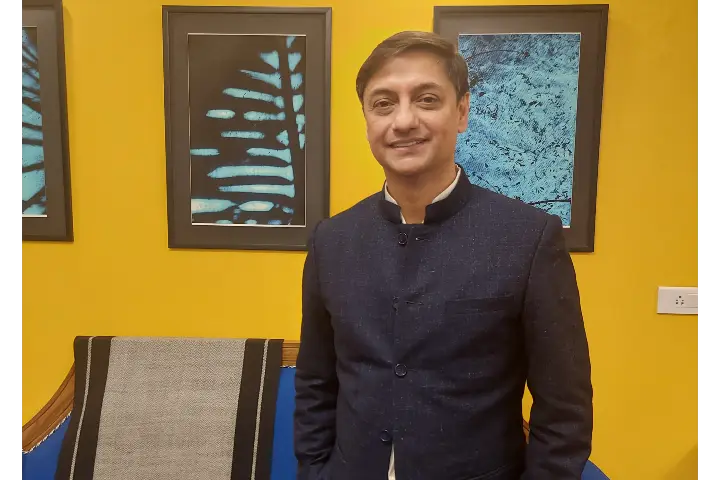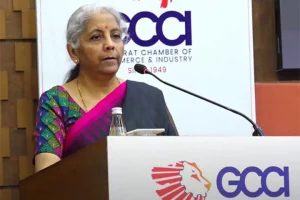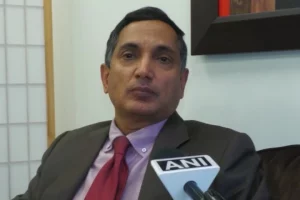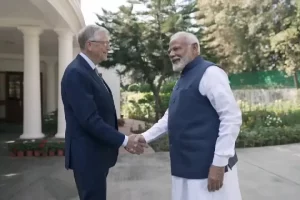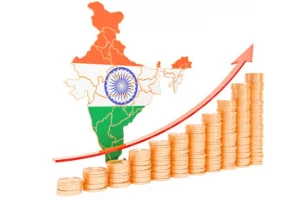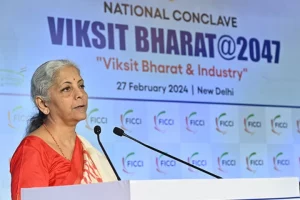Global rating agencies have clear biases against India, Sanjeev Sanyal, Member of the Economic Advisory Council to the Prime Minister (EAC-PM) tells India Narrative in an interview. While speaking on a host of macroeconomic issues, Sanyal underlines the need to push back to ensure that investments and trade flows do not suffer.
Q. You have been vocal about the biases that the international rating agencies have shown in ranking India. India’s ratings—be it hunger or happiness — have been lower than even countries like Pakistan, which is facing the risk of a default. How do you think this issue can be taken up?
I have written several working papers on this. These perception-based indices are being driven by a narrow narrative agenda of certain think tanks. Clearly there are biases despite hard data on socio economic parameters showing otherwise. I have highlighted the structural biases in their data. The problem has been there historically but no one challenged the methodology till a few years ago.
Indian policymakers have ignored this area in the past.
Q. Is it important to take these global rankings seriously?
Absolutely. There has been this idea that the international ratings will not have any concrete impact. But that is not true. They do have an impact—and not just on the sovereign ratings. Most of these ESG (environmental, social and governance) norms are rolled out globally, therefore they have a real world impact. It is extremely important that we push back and make sure that the correct narrative based on correct data is presented. Part of the problem is that no one earlier tried to understand the methodology.
Q. Why is there discrepancy in the data captured by these global rating agencies?
We are now seriously trying to understand the methodology. We found that many of them are based on extremely weak data. Some of the indices are based on the opinion of just 25 people. In some cases, it is even less than that.
For the first time we are now challenging the numbers, questioning them. Because they have real life impact– on Investments, sovereign ratings, trade flows. That is why we need to involve ourselves more in the process. Or else it will reflect a form of neo colonialism.
In a recent paper Prof Shamika Ravi has shown how various government schemes have helped the people and this includes the minorities. Nobody is disputing the data. If there is no dispute on data, then how can one come to a completely different lopsided conclusion?
Q. Now let us look at the economy. There is a threat of an emerging El Nino situation this year. How prepared are we?
We will see how that plays out. Obviously, El Nino does provide a degree of uncertainty to rainfall. So far, the IMD’s (India Meteorological Department) projection suggests it will be reasonably close to normal. It is an evolving situation. But, more importantly, we have adequate food stock. There is no problem with the buffer stock. We are not as vulnerable as we used to be in the past to El Nino type shocks. But of course, like I said, these are uncertain things. We are keeping a close watch. We will respond to the situation if and when we come to it.
Q. Will this threat push the thrust more on millet production?
Yes, we are focusing on millets. But it is something we are doing structurally. We want to promote millets because they have higher nutritional value. Millets are healthier than modern wheat and rice varieties. Mind you, I am not talking about the historical varieties. Second, of course these grains are much more resilient to weather fluctuations. It will also help in maintaining agricultural diversity and boost efforts to absorb any shock that may occur. So, the thrust on millet has nothing to do with an El Nino year.
Q. The International Monetary Fund has lowered India’s growth projections recently. Though the IMF growth projection is significantly lower than the RBI estimate, what is your take on this?
There is clearly a lot of uncertainty in the world, whether it is because of the war or stress in the financial systems in Europe and North America. And of course, the tensions that we have in East Asia. That apart we are still recovering from the covid shock. All of these mean that there is a great deal of stress in the global economy.
Consequently, multilateral agencies have naturally toned down their forecasts on global growth rate.
In that context India’s growth rate continues to be fairly strong. In fact, very significantly higher than not only the world growth rate but almost all other economies. I still think something around 6.5 per cent (growth rate) is achievable. This is a creditable performance in the current global context.
Q. But former Reserve Bank of India Governor Raghuram Rajan has said that India is dangerously getting close to the Hindu growth rate. What do you have to say?
First of all, this term was used for a growth rate of about 3.5 per cent. I don’t think any sensible economic forecaster is talking about a growth rate close to that for India. We are significantly higher than that despite the global situation. Secondly, the term itself is a suspect term. I am surprised that people are using it to this day. After all, it was used in the 1970s to deflect attention from the failure of Nehruvian socialism and blaming it on India’s cultural roots. So, it is surprising that such a term should be used in the 21st century. I am quite shocked.
Also read: No “Hindu rate of growth,” consumer spending will drive India’s economic rise, says ING report






